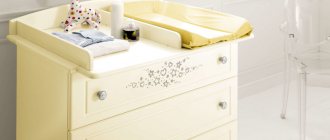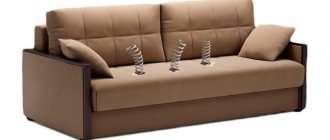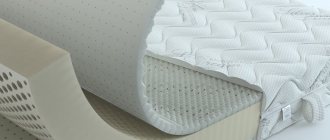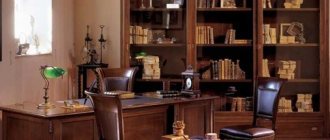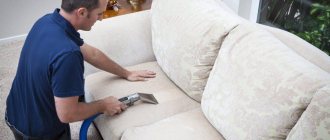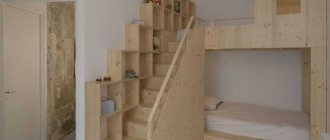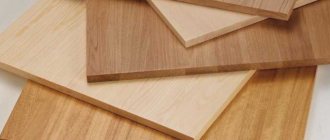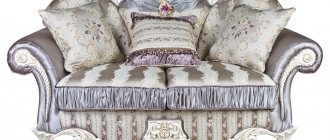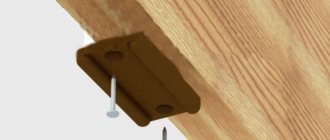Foam rubber is the common name for polyurethane foam.
The scope of application of this material, without exaggeration, covers all areas of human activity. Soft cellular synthetic foam with excellent insulating properties, high elasticity and breathability is used:
In furniture production. Foam rubber is indispensable in the manufacture of upholstered furniture from economy class to especially comfortable models. Armchairs, sofas, chairs, mattresses - the manufacture of these interior items is impossible without this universal material.
In construction. Insulation, sealing insulating materials.
It is worth noting the use of foam rubber products when finishing rooms to absorb sounds. Installing acoustic traps and sound-absorbing mats significantly reduces the level of external and internal noise in the room.
In the production of sporting goods. Sports equipment, mats of varying hardness and thickness, use of foam rubber scraps for filling jumping and safety pits.
— textile, footwear industry; — automobile production; — making toys; - medicine; — production of household appliances.
Polyurethane foam is widely used as a protective and packaging material.
The emergence of new materials with similar characteristics does not reduce its popularity, and the latest developments significantly improve its basic characteristics.
Purpose and properties
Foam rubber is a soft foam with a cellular structure, excellent insulating properties, excellent breathability and elasticity, which is why it is popular. 90% of the material consists of air. To make polyurethane foam, special synthetic components are used, which, reacting with each other, foam and then harden. The production of polyurethane foam involves the use of high-performance equipment and requires strict adherence to all the features and nuances of the technological process.
The main function performed by foam rubber for furniture is to give sofas, chairs, and poufs softness and elasticity. Polyurethane foam is used as a filler for any upholstered furniture, headboards, mattresses, and decorative pillows. The minimum permissible material thickness is 100 mm for the backrest, for seats - 300 mm, density - from 25 kg/m3.
Positive properties of foam rubber for furniture:
- environmental safety - does not contain, and therefore does not emit toxic components;
- is not an allergen;
- moisture-resistant, does not allow mold spores and fungi to multiply;
- retains its characteristics over a wide temperature range (from -40 to +100 degrees);
- has excellent sound insulation properties, effectively absorbs noise;
- soft and elastic, makes furniture comfortable and convenient;
- does not deform under the influence of weights, is able to withstand significant mechanical loads;
- it collapses under the weight of a person, but quickly restores its shape;
- has a large working resource.
Main types of fabrics for furniture upholstery, important selection criteria
As for the disadvantages, there are few of them. With daily, intensive use, furniture with this filler will last 7–8 years. When foam rubber burns, harmful substances are released, which complicates disposal.
The undeniable advantage of the material is its affordable cost. Furniture made using this filler is classified as budget.
Main characteristics
Manufacturers produce dozens of varieties of foam rubber. When purchasing polyurethane foam, it is important to consider the type and purpose of the piece of furniture. For example, for sofas that are used as a permanent sleeping place, it is better to choose hard foam rubber. But for seats it is recommended to purchase soft filling with a high comfort factor. To choose the most suitable option, it is worth studying the characteristics of the material:
- Foam rubber density (compactness). One of the most important indicators that determines characteristics such as softness, elasticity, and wear resistance. It is measured in kilograms per cubic meter.
- Stiffness (compressive stress). Determines the force that must be applied to compress the filler by 40%, measured in kilopascals (kPa).
- Fortress. The higher it is, the stronger the material. The parameter determines the ability of the filler to withstand tensile loads.
- Elasticity. It can be measured using special testing, during which the canvas is crushed, released, and the rebound height is determined. The higher the elasticity index, the softer and more comfortable the furniture.
- Residual deformation. Reveals the ability of foam rubber to maintain size and shape. To determine this indicator, the material is compressed by 50%, exposed to high humidity and temperature, and then the difference between the original shape, before and after external influence is analyzed.
- Convenience. It is determined by two coefficients: support (uniformity of load distribution over the entire plane) and comfort (how soft the material is).
Polyurethane foam is available in different formats and sizes. There are quite a lot of types of material. For the manufacture of upholstered furniture, sheet foam rubber is most often used. The thickness of the canvas varies from 5 to 1000 mm. Roll and block polyurethane foam are less commonly used.
Rules for cleaning leather furniture at home, review of products
Polyurethane foam has a cellular structure, so its processing entails certain difficulties. CNC laser machines are used to cut and obtain the workpiece of the desired shape and size. The technique is silent, effective, and affordable. Advantages: minimum waste, ability to cut products with complex geometric shapes.
Rigidity
Fortress
Elasticity
Permanent deformation
Convenience
PPU release form
The market offers a wide variety of forms, types, brands of polyurethane foam:
1. Leaf.
Manufacturers supply rectangular foam rubber with a thickness of 5 to 1000 mm in standard cuts, or according to individual customer requirements.
2. Rolled.
Reels of various widths are convenient to use, material thickness up to 30 mm. In addition to the usual, manufacturers offer rolled foam rubber made on a backing made of fabric or synthetic materials.
3. Block.
This type of foam rubber is distinguished by a hard, non-porous surface (before processing). In addition to cubic ones, this type of foam rubber is poured into molds of various configurations. After cooling, the crust is removed, the material acquires a homogeneous structure.
4. Acoustic.
They are supplied in the form of separate panels of two types: with relief and without relief. The panels have different shapes, colors, and sizes. In addition to its own properties, a significant increase in the sound absorption coefficient is ensured by the shape of the surface. For more information about acoustic foam rubber, read the article - Acoustic foam rubber: types, installation, sound insulation, price
Features of different brands
Latin letters and numbers are used to mark foam rubber. This is an established classification. By reading the labeling, you can get maximum useful information: purpose, characteristics, properties.
| Designation | Kinds | Purpose |
| ST | Standard | Manufacturing of armrests, headrests, decorative elements, seats (with mandatory consideration of the expected load) |
| H.L. | Hard | Production of seats and mattresses, stiffness and density indicators are selected depending on the expected load |
| EL | Increased rigidity | Suitable for making seats for sofas and sleeping places that are used intensively |
| H.S. | Soft and ultra soft | It is used to make backrests for sofas and top covers for mattresses. |
| HR | Highly elastic | Used as a filler for the backs and seats of expensive furniture designed for long-term use |
Marking is carried out according to three parameters: variety, density, hardness. If manufacturers offer material marked ST3542, this is standard polyurethane foam, the density of which is 35 kg/m3 and the hardness is 4.2 kPa.
Polyurethane foam with a density below 25 kg/m3 is cheap, but is used extremely rarely in the furniture industry; it is more suitable for packaging. When choosing this filler for furniture, you should not expect high quality characteristics from it.
Choosing foam rubber
In order for the furniture to last for a long time after repair, you should determine which foam rubber is best suited for this purpose. To do this, you need to consider the following requirements:
- The quality of the material must be the same or higher than that of the filler that has become unusable.
- The thickness of the foam sheet should be at least 4 cm, especially if the sofa is used as a sleeping place.
- It is better to choose a density of 30 kg/m3; such foam rubber will retain its elasticity for a long time. The quality of the filling for the upholstery of the backrest and armrests (and it is better to immediately change them along with the seat, even if they have not yet lost their properties) may be slightly lower, and it will cost less.
Before and after replacing foam rubber
Density plays an important role; for a seat it is better not to use less than 30 kg/m3, but softness or hardness can be adjusted to your liking. The following varieties are distinguished:
- Increased rigidity.
- Hard.
- Soft.
- Highly elastic, with orthopedic properties.
- Highly elastic with increased comfort.
You will probably be interested in learning how to give a second life to an old mattress.
Rules for the use and combination of materials
When making furniture, types of foam rubber are combined. One product can combine dense and soft polyurethane foam with different comfort levels. Before choosing furniture foam rubber, you should take into account the purpose and operating conditions of the products:
- Sofa-sofa and sofa-book. Sleeping place - ST3542/EL2842, backrest - EL2540.
- The decorative headboard of the soft bed is EL2240, the remaining elements are EL2842/ST3542.
- Corner sofa. Backrest - ST3542, berth - EL2842/ST3542.
- Armchairs, chairs - EL2842/ST3542.
- Kitchen corner - EL2842/ST3542.
- Mattress - EL2842/ST3542 + coconut coir + felt layer.
Criteria for choosing European covers for upholstered furniture, color range of covers
Foam rubber is used not only for making furniture, but also for its restoration. Polyurethane foam goes well with padding polyester. The latter prevents the filler from sticking to the fabric, smoothes out minor irregularities on its surface, making the furniture even more comfortable and convenient, extending its service life.
To make soft, elastic poufs and seats, foam rubber with latex is used.
Tips for choosing
Before you purchase furniture foam rubber, you must learn to read the labeling. You should not try to save on the quality of the filler, as this will affect the functionality, aesthetics, and durability of the finished structure. When choosing a material, you need to consider a number of recommendations:
- the minimum thickness of sheets must be at least 3 cm, the density of foam rubber for furniture is from 25 kg/m3;
- if the filler is purchased in a store, you need to check whether it holds its shape well using simple tests (squeezing, bending, tactile sensations);
- the composition should be studied, especially if polyurethane foam is chosen for children's furniture (some manufacturers add substances that can cause allergies).
The correct name for the material in question is soft polyurethane foam. In Russia, the name foam rubber is common for the reason that several decades ago the main supplier of raw materials was the Porolon company (Norway). Over time, its name became a household name and firmly established itself in the countries of the former USSR.
Polyurethane foam is the most popular and common filler for upholstered furniture. It has significant advantages, against which the disadvantages do not seem so significant. The material is available in a wide range, so you can choose it for the manufacture of different pieces of furniture.
It is important to pay attention to the markings; all information about the material is indicated there.
Purpose of various brands of furniture
The main criterion for choosing furniture foam rubber is its density and purpose, but in no case its cost. For example, using an inexpensive brand of foam rubber 2535 as upholstery for a sofa seat will significantly reduce the service life of the product compared to brands of higher density.
As a recommendation for choosing a brand of foam rubber for the production or repair of upholstered furniture, we provide the following table of the dependence of the density of the material on the weight of a person for upholstery of various parts.
| Upholstery details | Children's furniture, density kg/m3 | Adult furniture, density kg/m3 |
| Headrest | 25 | 30-40 |
| Armrest | 25 | 30-40 |
| Back | 22 | 25-40 |
| Seat | 30 | 30-40 |
| Mattresses | 25 | 25-40 |
With the right choice of filling material, upholstered furniture will last more than 10 years.
